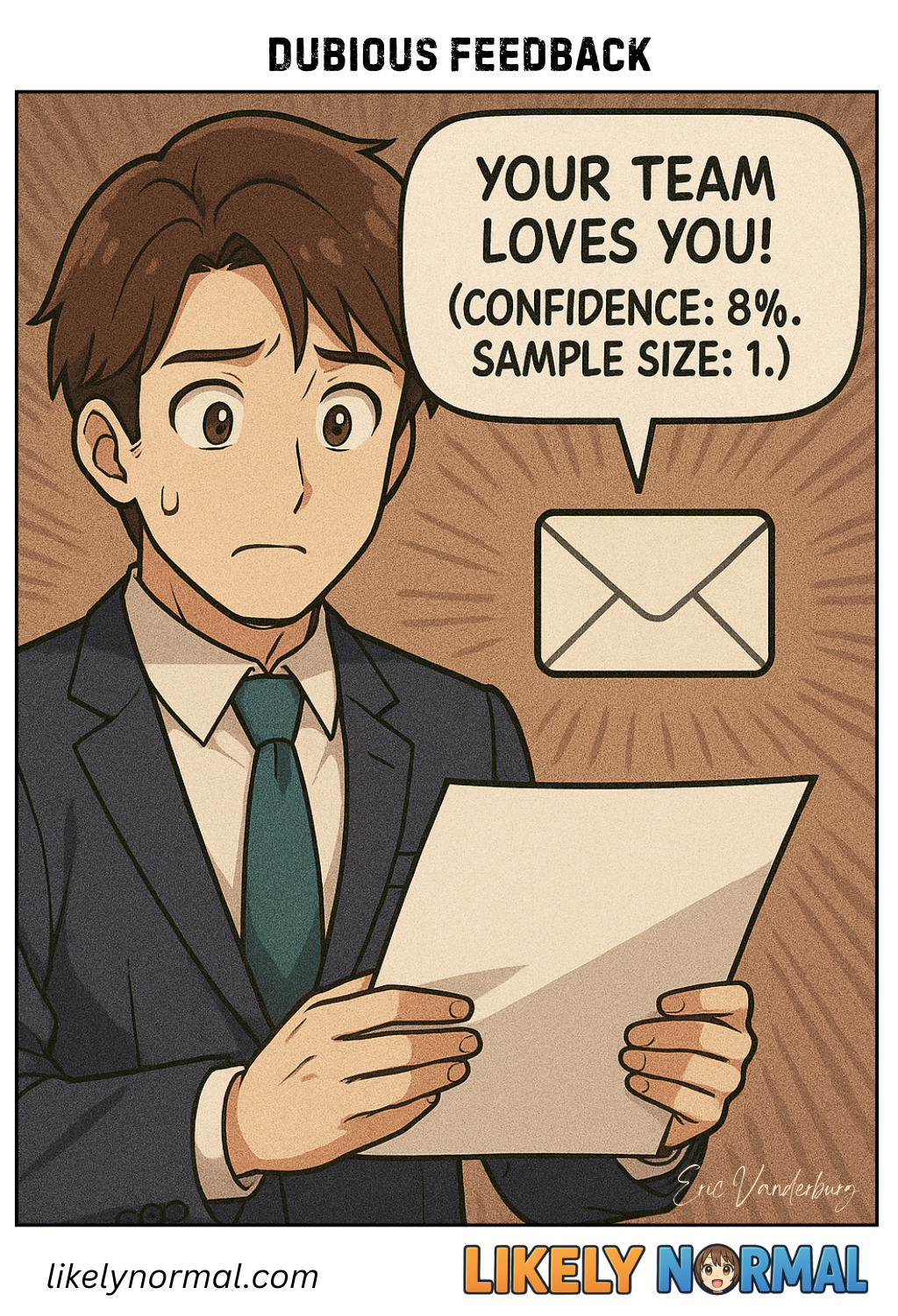Dubious Feedback
Ah, the annual employee survey—a sacred corporate ritual where companies pretend to care about your opinions, and employees pretend they believe them. These digital interrogations promises that your voice matters while delivering results that are promptly filed under things we will ignore until next year’s survey. The questions are masterpieces of vague corporate-speak: *”On a scale of 1 to 5, how empowered do you feel to innovate within a dynamic, cross-functional paradigm?”* (Translation: “Do you like your job, or are you just here for the bad coffee?”)
The options never quite fit. Are you Very Satisfied, Somewhat Satisfied, or Neutral about your workplace? Where’s the button for “I survive on caffeine and spite” or “My manager’s leadership style is best described as ‘absentee warlord’”? Instead, you’re left to agonize over whether Somewhat Dissatisfied is too harsh or if Neutral will be interpreted as “This employee is plotting their escape.”
Then there’s the comment box, a tantalizing glimpse of freedom where you can finally speak your truth—except anything more honest than “More snacks, please” gets flagged by HR’s sentiment analysis bot and buried in a vault labeled “Do Not Open Until Never.” The feedback cycle is a cruel joke: You spend 45 minutes carefully crafting suggestions (“Maybe fewer meetings about meetings?”), only to receive a company-wide email months later boasting “93% of employees feel heard!”—a statistic that conveniently ignores the 70% who wrote “I do not feel heard” in the comments.
Nothing changes. The same issues persist year after year, the same vague “action plans” are drafted and abandoned, and the same survey reappears like a recurring nightmare, asking you to once again rate “work-life balance” in a company that emails you at midnight. But hey, at least you got a participation sticker in your inbox.

Discussion ¬